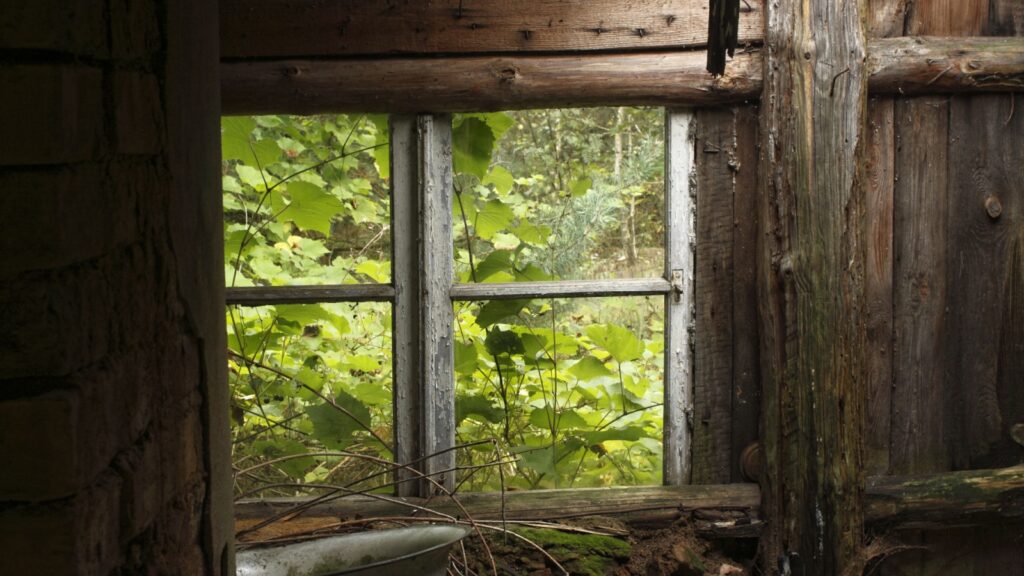Ever wondered what might be lurking in the dark corners of your garden shed? You might be surprised to learn that several venomous creatures call these cozy spaces home. Let’s explore 12 fascinating, yet potentially dangerous, critters that could be sharing your storage space.
False Widow Spider
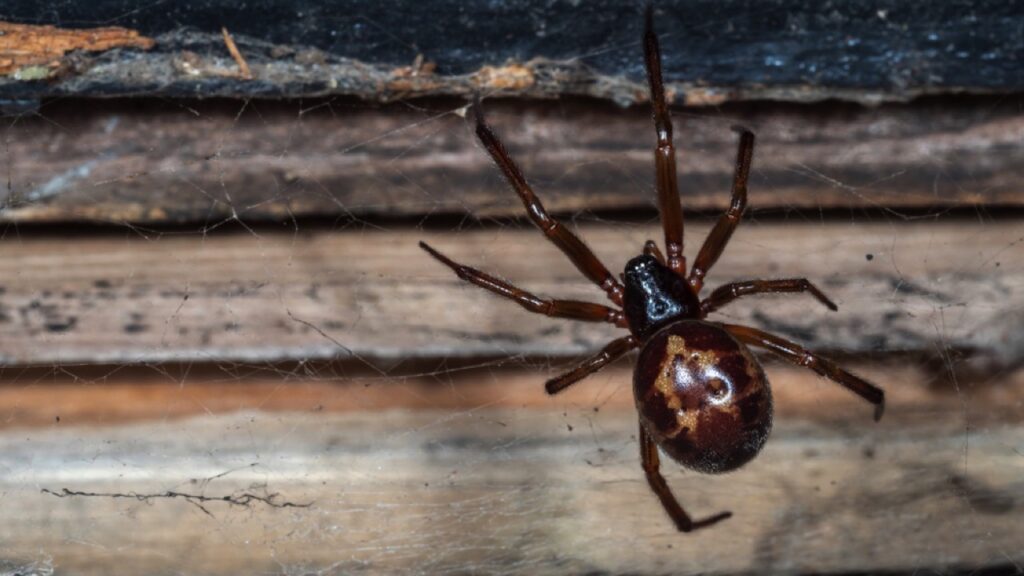
The false widow spider is often mistaken for its more dangerous cousin, the black widow. These spiders have a dark, bulbous body with creamy markings. While their bite can be painful, it’s rarely dangerous to humans. False widows love quiet, undisturbed areas, making your shed an ideal home for them.
Common European Adder
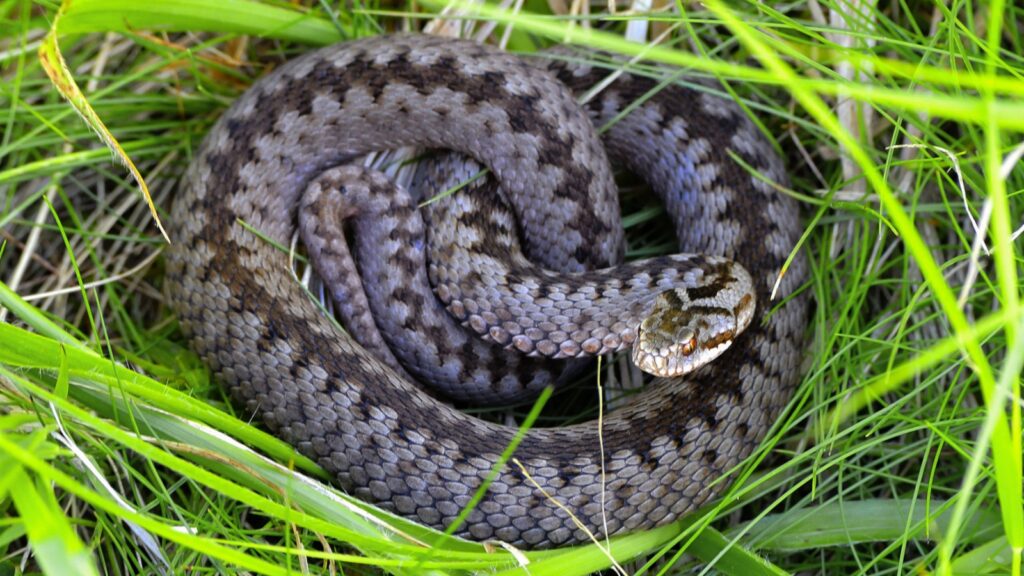
The adder is the UK’s only venomous snake. It has a distinctive zigzag pattern along its back and red eyes. Adders are shy creatures that prefer to slither away from humans. However, they might seek shelter in your shed during cold weather. Their bite can be painful and cause swelling, but it’s rarely life-threatening.
Giant House Spider
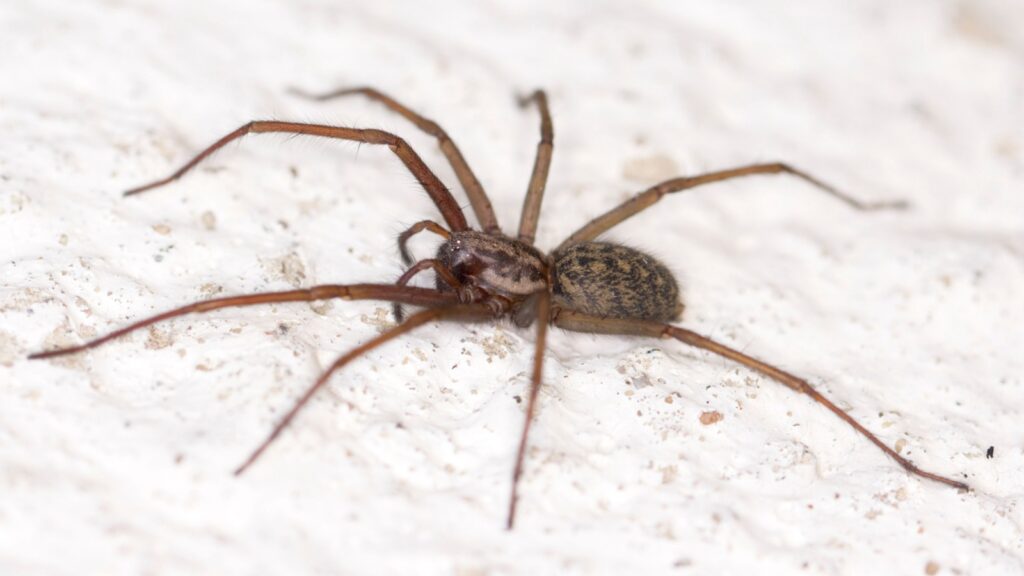
Despite its name, the giant house spider often makes its home in sheds and garages. These large spiders can run surprisingly fast and might give you a fright. While venomous, their bite is usually no worse than a bee sting. They help control other insect populations, making them beneficial guests in your shed.
Woodlouse Spider
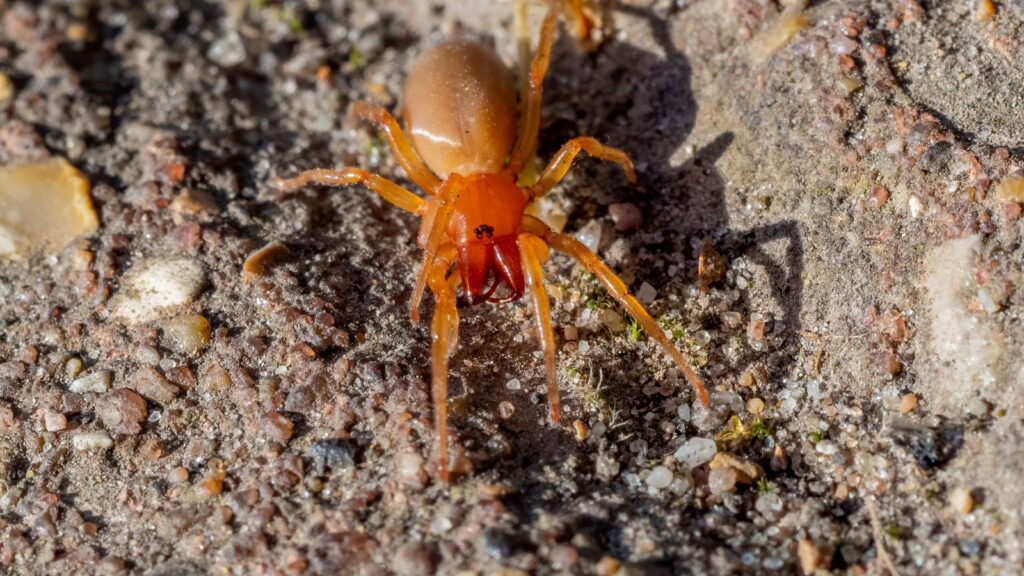
The woodlouse spider has powerful jaws and a bright red body. As its name suggests, it primarily feeds on woodlice, which are common in garden sheds. While its bite can be painful, it’s not dangerous to humans. These spiders play a crucial role in controlling woodlouse populations in your garden.
Yellow-Tailed Scorpion

Believe it or not, the UK has a small population of scorpions! The yellow-tailed scorpion is found mainly in southern England. They love to hide in cracks and crevices in walls, making your shed a perfect habitat. Their sting is painful but not dangerous to most people.
Hornet
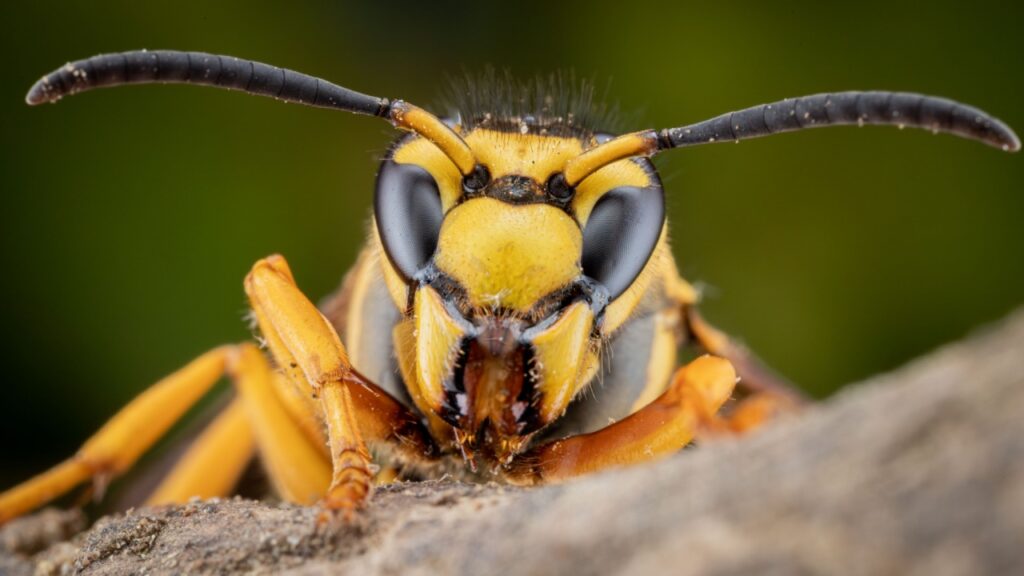
The European hornet is the largest wasp species in the UK. These insects sometimes build nests in sheds, attracted by the shelter. Hornets are generally not aggressive unless their nest is threatened. Their sting is painful and can cause allergic reactions in some people.
Segestria Florentina Spider
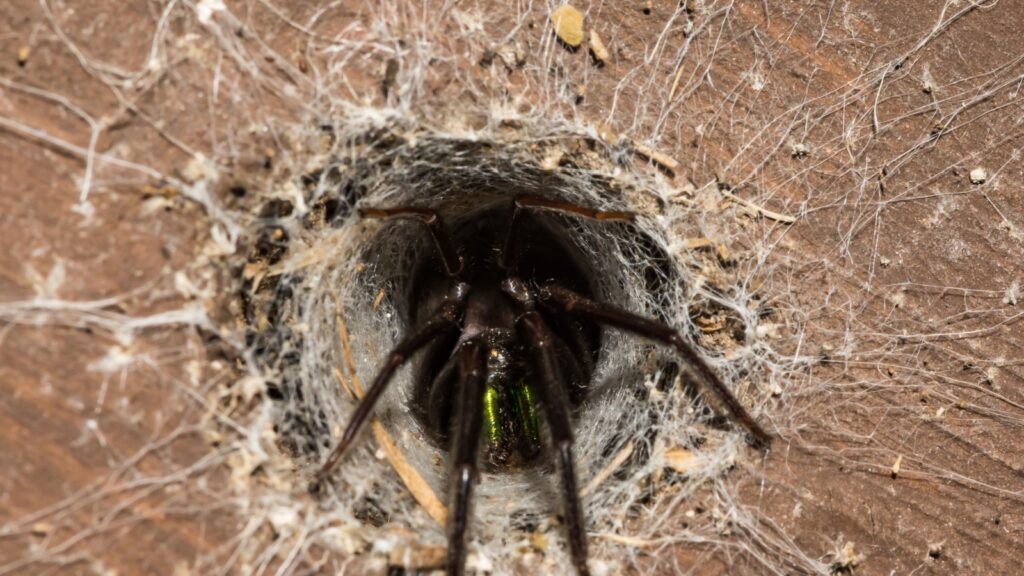
This large tube-web spider is recognizable by its green, shimmering jaws. It builds funnel-shaped webs in cracks and holes, often in shed walls. While venomous, its bite is not dangerous to humans. These spiders help control flying insect populations around your shed.
Bees
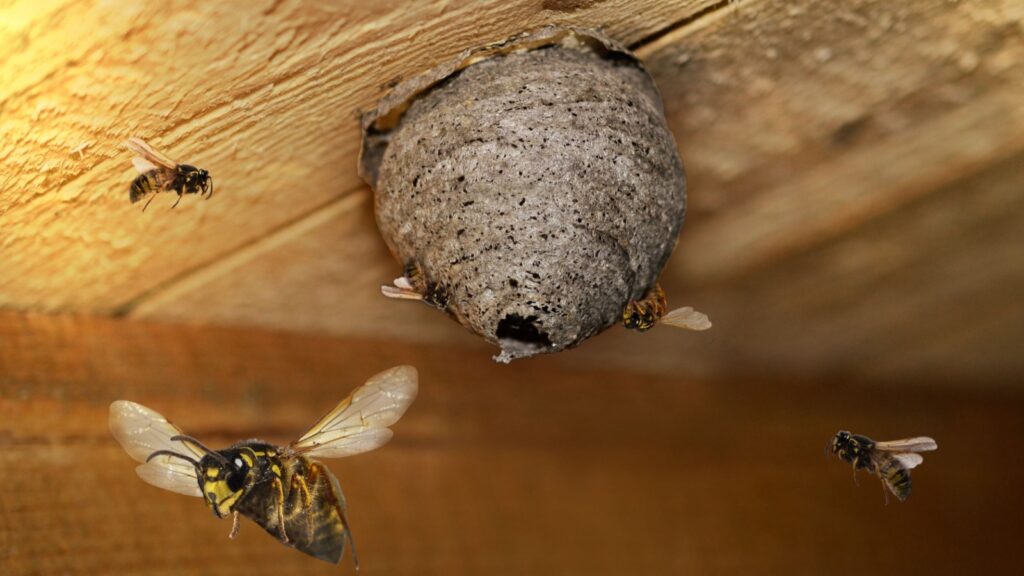
Various bee species might build nests in your shed, attracted by the shelter and nearby flowers. While bees are generally docile, they can sting if they feel threatened. Some people are allergic to bee stings, which can make them dangerous. Remember, bees are crucial pollinators and should be protected whenever possible.
Centipede
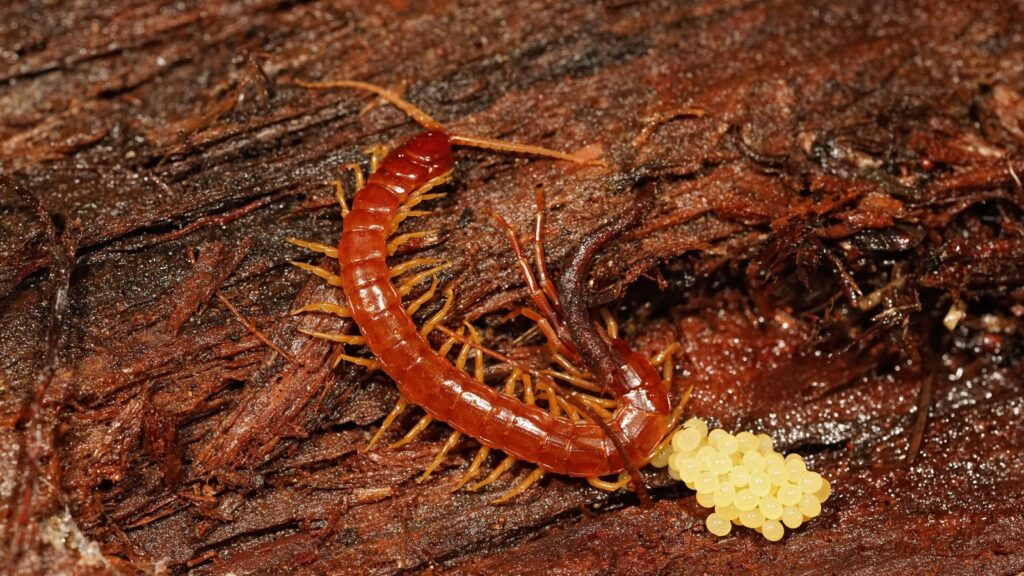
The common centipede found in UK sheds can deliver a painful bite. These fast-moving creatures have venomous claws near their head. They hunt other insects and spiders, helping to control pest populations. While their bite can hurt, it’s not usually dangerous to humans.
Cellar Spider
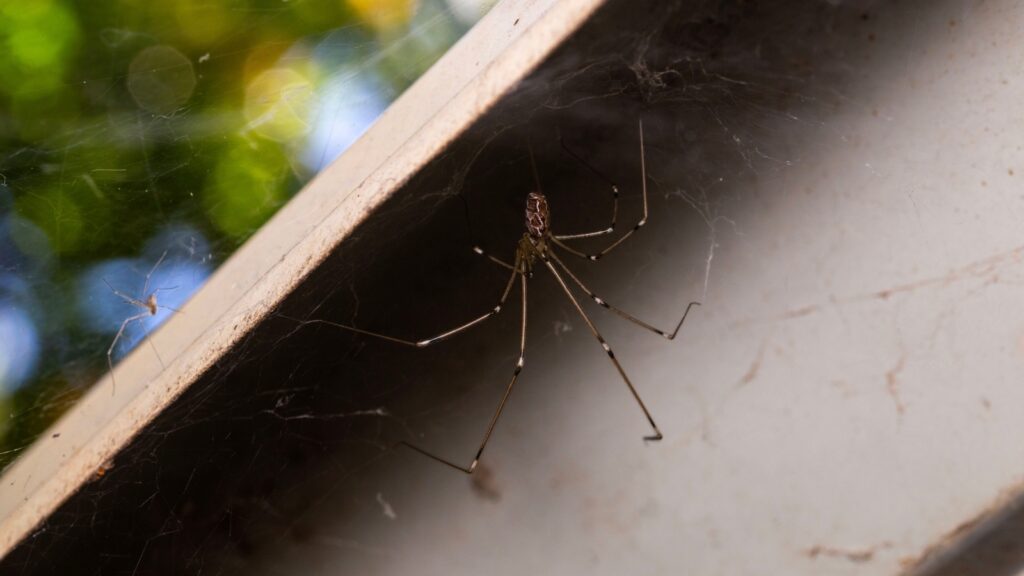
Also known as daddy long-legs spiders, cellar spiders are common shed residents. They have a mild venom that’s harmless to humans. These spiders are beneficial, as they catch and eat other spiders, including more dangerous species. Their presence in your shed is generally a good sign.
Becky is a fervent wildlife enthusiast and pet care expert with a diploma in canine nutrition. Her love for animals stretches beyond the domestic, embracing the wild tapestry of global fauna. With over a decade of experience in animal welfare, Becky lends her expertise to OutlandishOwl through insightful articles, captivating wildlife information, and invaluable guidance on pet nutrition. Her work embodies a deep commitment to understanding the intricate lives of animals and a passion for educating others on sustaining natural habitats. Becky's hands-on conservation efforts and her knack for translating complex dietary science into practical pet feeding tips make her an indispensable voice for creatures great and small.

